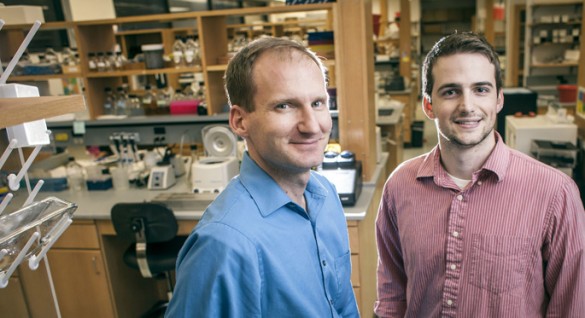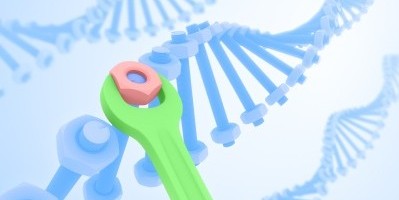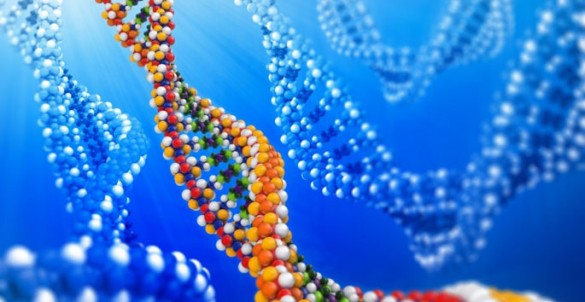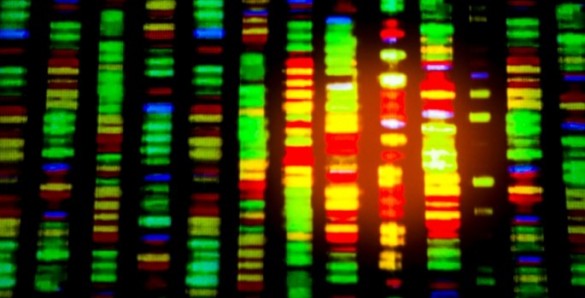
When David Cortez, Ph.D., talks about cell division, the numbers add up quickly.
“There are something like ten thousand trillion cell divisions over the course of a human lifetime,” said Cortez, professor of Biochemistry and Cancer Biology. “And every time a cell divides, it has to copy the DNA, which includes about 6 billion bases, and that happens in the context of lots of DNA damage or other problems in the DNA template.”
Failures in DNA replication leave mutations in the genome, which cause cancer and other diseases, including inherited neurodegenerative and developmental diseases.
Cortez and his colleagues are trying to understand how all this DNA replication happens faithfully so that every cell ends up with exactly the same DNA — and without damaging mutations.
In a pair of papers in Genes & Development and Cell Reports, they described the workings of parts of the DNA replication machinery.
Their findings shed light on fundamental processes involved in DNA replication and have implications for cancer therapies that target these processes.
Cortez and his colleagues focused on the replication stress response machinery — the group of proteins that senses damage in the DNA and enables DNA repair so that copying can proceed.
The protein ATR is a master regulator of the replication stress response. In studies led by graduate student Jami Couch, the investigators found that blocking ATR activity with specific inhibitors resulted in breaks in the DNA and rapid cell death. Without ATR, “replication doesn’t happen,” Cortez said.
The team knew from previous studies that ATR modified the motor protein SMARCAL1.
In studies led by postdoctoral fellow Rémy Bétous, Ph.D., the researchers demonstrated that SMARCAL1 recognizes stalled replication forks — the structures that occur when the copying machinery encounters DNA damage.
SMARCAL1 then winds the DNA into a unique structure that puts the damaged spot into a favorable position for repair.
The researchers thought ATR must activate SMARCAL1 to generate the structure that allows repair. Instead, they found that ATR prevents SMARCAL1 from over-winding.
“ATR keeps control of SMARCAL1 so that it doesn’t do too much,” Cortez said.
The studies explained how SMARCAL1 recognizes and responds to the stalled replication fork and demonstrated that the enzyme is conserved from bacteria to humans.
“Creating this structure (to allow DNA repair) is a fundamental process to copying DNA,” Cortez said.
ATR’s role in regulating SMARCAL1 adds to a growing body of information about the replication stress response machinery.
This machinery — and ATR in particular — is considered a good target for cancer therapies. Because cancer cells are genetically unstable, they rely more heavily on the stress response and repair machinery to fix problems during replication, compared to normal cells.
“There’s a Goldilocks level of genetic instability that’s just right for a cancer cell — just right to drive tumorigenesis and cancer progression,” Cortez explained.
If there’s too little genetic instability, there won’t be enough cancer-driving mutations, and cancer won’t develop.
If there’s too much genetic instability, the replication stress response machinery won’t be able to keep up with all the damage, replication will not proceed, and the cancer will die.
The idea behind drugs that block ATR is to “perturb the Goldilocks level and push the cancer cells to too much genetic instability,” Cortez said. Drugs that inhibit ATR are in development but not yet in clinical trials.
“If we’re going to treat patients with these drugs, we need to understand how ATR works and what these drugs are actually doing,” he added.
This research was supported by grants from the National Institutes of Health (CA136933, CA102792, CA009582, CA171586), the Breast Cancer Research Foundation and the Department of Defense Breast Cancer Research Program.















